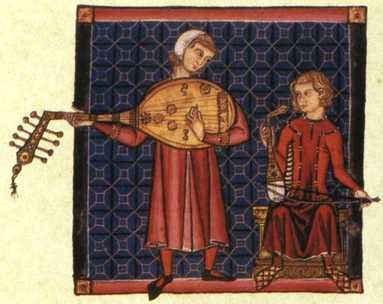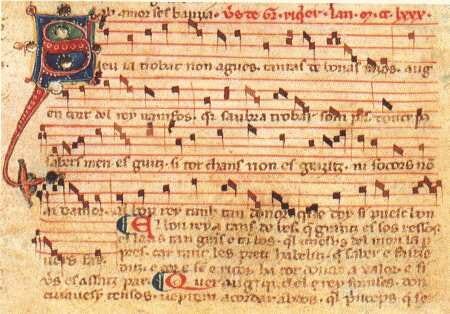EVERY GENRE PROJECT - December 30 - Medieval Lyric Poetry
Genre of the Day - Medieval Lyric Poetry
Album of the Day - Music of the Troubadours by Berenguer de Palou (1996)
On the second last day of the year, I finally got around to indulging in three hours’ worth of feature-film jubilee and preeminent vocal talent and went to see Wicked in theaters. It was a lovely and hopeful watch to cap off the year, and I truly can’t believe we’re only two articles away from the end of this project (at least, in its first iteration! Always up from here!!) Composer Stephen Schwartz’ wonderful melodies and ebullient arrangements were charming throughout, and it only makes me wish I could cover show tunes again. Today’s genre reminds us of the everlasting magic of musical performance and storytelling, through centuries of ideas; it’s been a very medieval month here. With the new year almost upon us, we remind ourselves that we are in the continual process of millennia of history. Even so, it’s best to take things day by day.
Medieval lyric poetry’s history is centered upon southern France, historically known as the region of Occitania that has lived a distinctive cultural and linguistic history separate from the goings-on of northern neighbor Île-de-France (home to Paris) and its surroundings. The troubadour’s heyday began around the 12th century and faltered with the Black Death, an intangible victim of the bubonic bacteria. For a few golden centuries, these wandering medieval iteration of singer-songwriters had their presence requested by kings and queens as they often performed their songs in the Occitan of the time, keeping current with the times rather than solely penning lyrics in Latin, their contemporary language likely increasing the songs’ resonance for all who heard. These singers wrote the story of their region in opposition to surrounding ones, as near-constant conflict would understandably produce: for instance, there was the idea of the Occitan joy of love in contrast to French military prowess.
Medieval lyric poetry is well-associated with the theme of courtly love, the still-salient mythos of love predicated on the courting man’s heroic endeavors to win the faith and love of a noblewoman. As culturally crucial as those tales became, their pens were versatile, recounting historical events, and veering into far-off lands—an increasingly commonplace subject with crusade after crusade moving swathes of Europeans across the Mediterranean. The era of medieval lyric poetry was most important for having set the ground for vernacular poetry as a whole, and Renaissance authors as towering as Dante and Petrarch followed in their poetic tradition in developing the ethos of the Renaissance. There are troubadours today for those with the poetically-inclined gaze to see: beloved modern-day troubadour equivalent Bob Dylan recently just received a biopic, which may not increase awareness of medieval lyric poetry,but is still indirectly indebted to it, no? Troubadour poetry was split into a few forms: the rich trobar ric, epitomized by poet Arnaut Daniel of the Dordgone, the light and accessible trobar leu, and the obscure trobar clus, the most niche and underground expression primed only for elite understanding spearheaded by poets like Peire d'Alvernhe who earned the first shoutout of a troubadour in Dante’s Divine Comedy.
Invoking the noble unicorn, today’s ensemble selects some of the surviving pieces by troubadors whose lyrics remain eternal: “Quan vei la lauzeta mover” is a landmark poem for speaking in the present tense, meditating on unrequited love through the vision of a lark as anxious drums and flute heighten the drama. Love’s paradoxes haunt yearners no matter the era: “How much I thought I knew / About love, and how little I know / Because I cannot keep myself from loving / The one from whom I will gain nothing.” Trobar leu number “Non puesc sofrir” represents its dynamism, as the singer interprets its lyrics through feathery belts and emphatic spoken drama, emphasizing the words’ suffering and release. “Bel m'es qu'ieu Chant” is addressed to Peter II of Aragon after his ascendance to the papacy, delivered with apt pride and passion for the first man from the region to hold the role and reflecting the direct connection between the troubadour performer and the noble audience; whether we sit in thrones or in arguably-more-regal reclining AMC seats, it is a blessing to take in the entertainment endeavors of those who perform.






